
Search
The Renewable Energy site for Do-It-Yourselfers
Empty Box Solar
Air Heating Collector Performance
| This is a performance test on what is probably the simplest kind of
solar air heating collector that could be constructed. It is
simple an empty box painted black inside with the air entering one
corner and exiting the opposite corner. This is is the first collector
design to be tested in a series of collector designs. I decided to
start with the simplest possible design even though the expected
performance is not good because it seems like a go good place to start,
and maybe it will surprise and do well.
All of these tests of various designs are compared side by side with
a standard
reference collector.
In addition,
Scott
is doing a similar series of tests, and the results of Scott's tests can
be compared to the results from my tests. Anyone else who wants to
join in and test their favorite design is more than welcome.
Bottom line: the screen absorber collector has 1.7 times the heat output of the empty black box collector.
Back to the Solar Air Heating Collector test
program home..
|
|
Test Setup
The pictures and notes below show the setup for the comparison test between
the backflow reference collector and the empty box collector. This will be
the setup used for future tests of other collector designs.
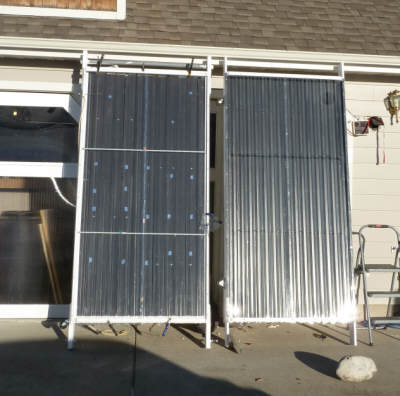
The two collectors -- reference to left and empty box to right |
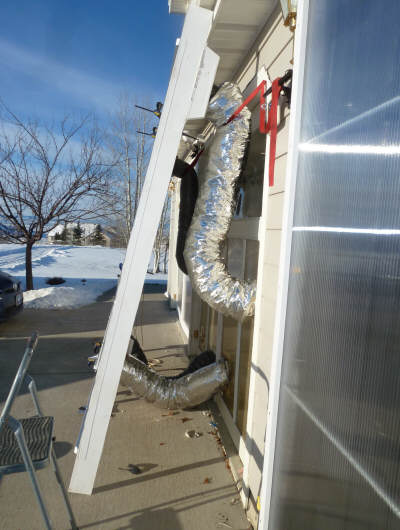
Side view of the two collectors with ducts going into shop. |
The empty box collector is literally that. Its a glazed box that is
painted black inside. Looks like this before the glazing is installed.
This inlet and outlet have not been installed yet, but they come into the
collector through the back in opposite corners.
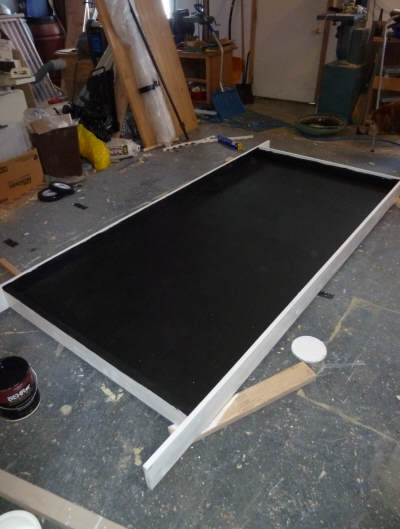
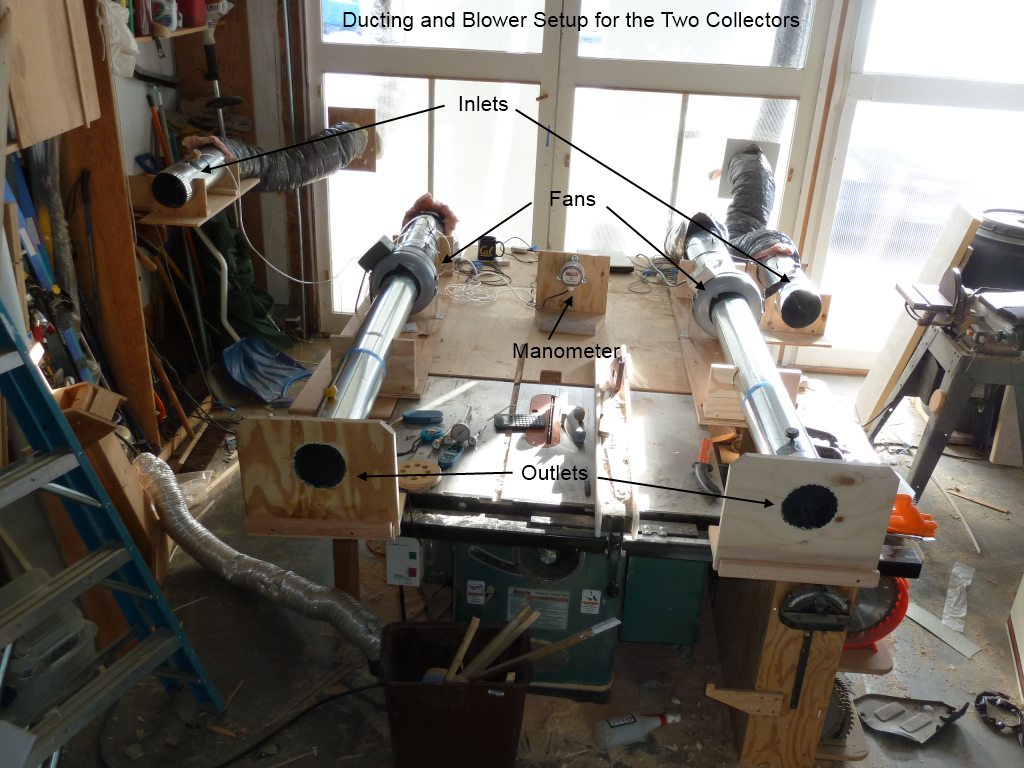
This is the fan and ducting setup inside the shop.
The collectors draw in shop air, heat it, and return it to the shop.
The ducting and fan setup for each collector is nearly identical.
A damper is used to adjust the flow to be the same through both collector.
The manometer is used to measure the pressure drop across the collector to
get an idea how much air resistance the collector design has.
The airflow for the two collectors is adjusted until its equal for each and
about 2.3 cfm per sqft of collector.
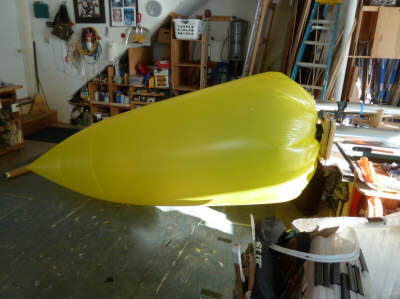
This is the "big bag" being used to flow rate measurement
checks. The fill time is measured and flow rate
calculated from fill time and bag size. |
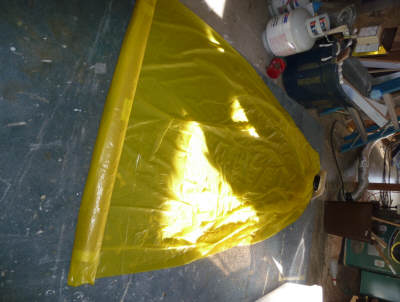
All the air being rolled out of the bag with a cardboard
tube before starting the next flow test. |
Most of the flow measurements were setup with a Kestrel wind meter held in
the middle of the flow at the outlet, but several measurements were also taken
using the big bag method, which appears to work well and give very repeatable
results. The bag inlet is made to mate with the outlet duct quickly ad
repeatable. I time the end of the fill by watching the manometer
dial -- it is unchanged for most of the fill, and then drops quickly right in
the last second of the fill -- I hit the stopwatch when the pressure drops by
0.1 inches of water.
Performance
This pictures shows sky conditions during the test.
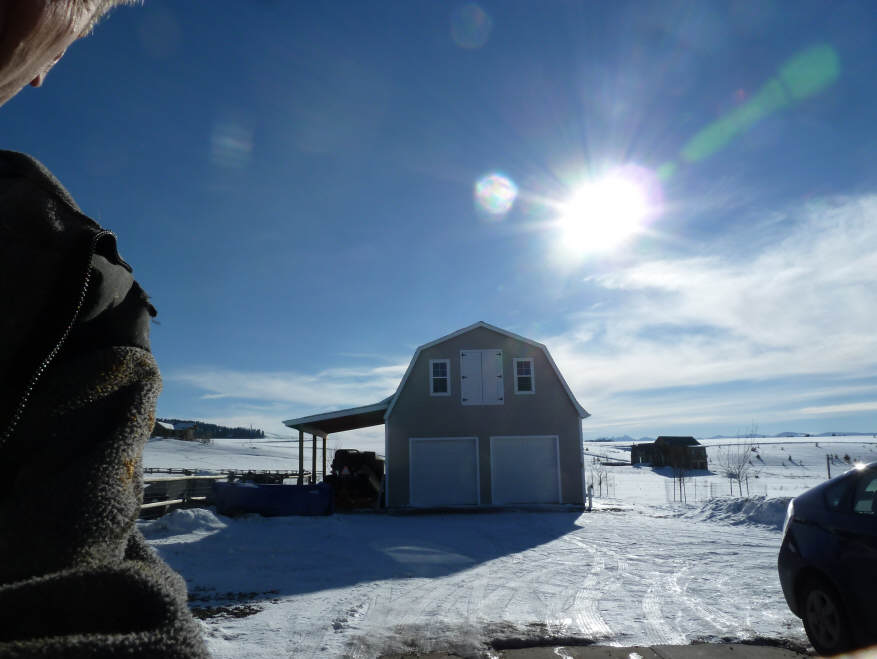
The picture is taken with the camera back flat against the collector glazing
at 1:07 pm.
It was a good sun day with some high wispy clouds in and out.
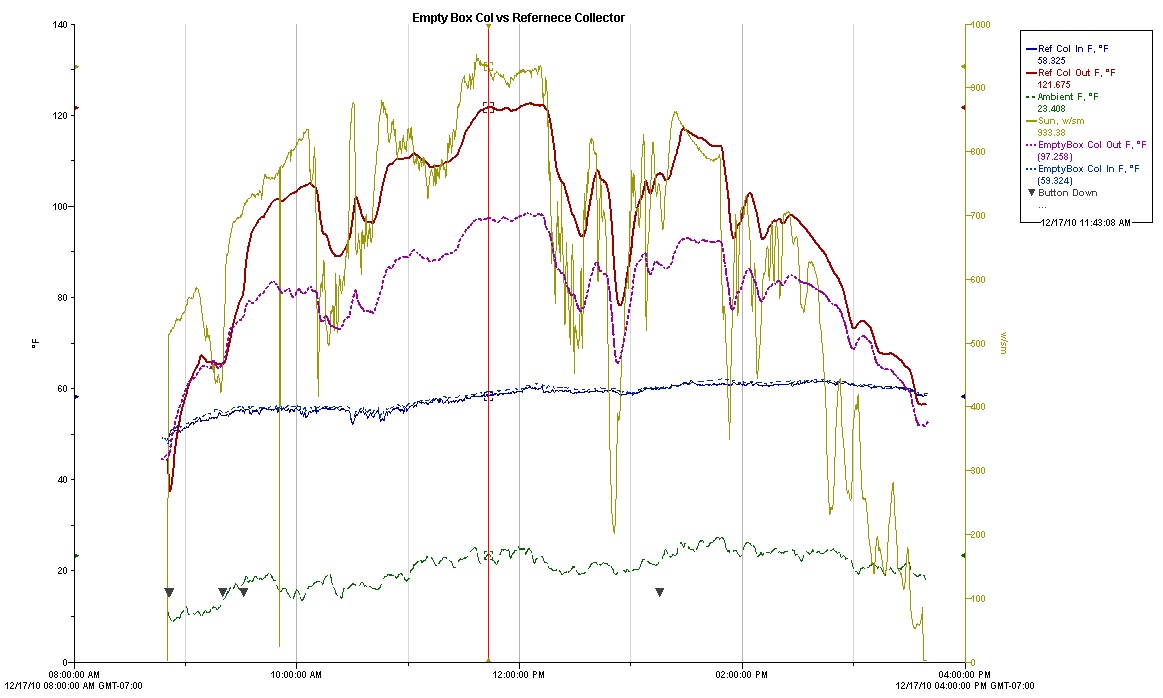
This plot shows the performance comparison for the empty box collector and
the reference collector.
Ambient temperature -- green lower line
Collector inlet temps -- the two blue lines at about 55 F
Empty box outlet temp -- purple line dash line -- 97.3 F at
the marked point
Reference col outlet temp - red solid line -- 121.7 F at the marked point
Sun intensity -- sickly green line -- 933 w/sm at the marked point.
The flow rates for the two collectors are close to the same, so the
performance can be compared by just comparing the temperature rise for each
collector. Flow rate was 71 cfm -- about 2.3 cfm per sqft of collector
area.
At the marked point, the
Empty box temperature rise is 97.3 F - 59.3F = 38 F
Reference collector temperature rise is 121.7 F - 58.3 F = 63.4 F
So, the heat output from the reference collector is about 1.67 times that for
the empty box collector.
This same sort of result help for other points in the day and for an
additional test on another day.
As expected, while the empty box design does collect some heat, it does not
do nearly as well as the more carefully designed reference collector.
Other Stuff
Smoke
I did attempt a smoke test with the empty box collector. I
expected to see the smoke rush from the inlet to the outlet while leaving parts
of the collector with little to no flow. As best I could see, this did not
happen. While the flow was not perfectly uniform, it did appear that all
of the collector was getting some flow.
Glazing Temperature
I measured the glazing temperature of both collectors while they were
operating. I don't have those number here right now, but will add them
later. The glazing temperature for the the empty box collector was
significantly higher than the reference collector. This high glazing
temperature no doubt results in significant heat loss out the glazing, and may
account for a larger part of the difference in performance between the two
collector.
Gary January 2, 2011


